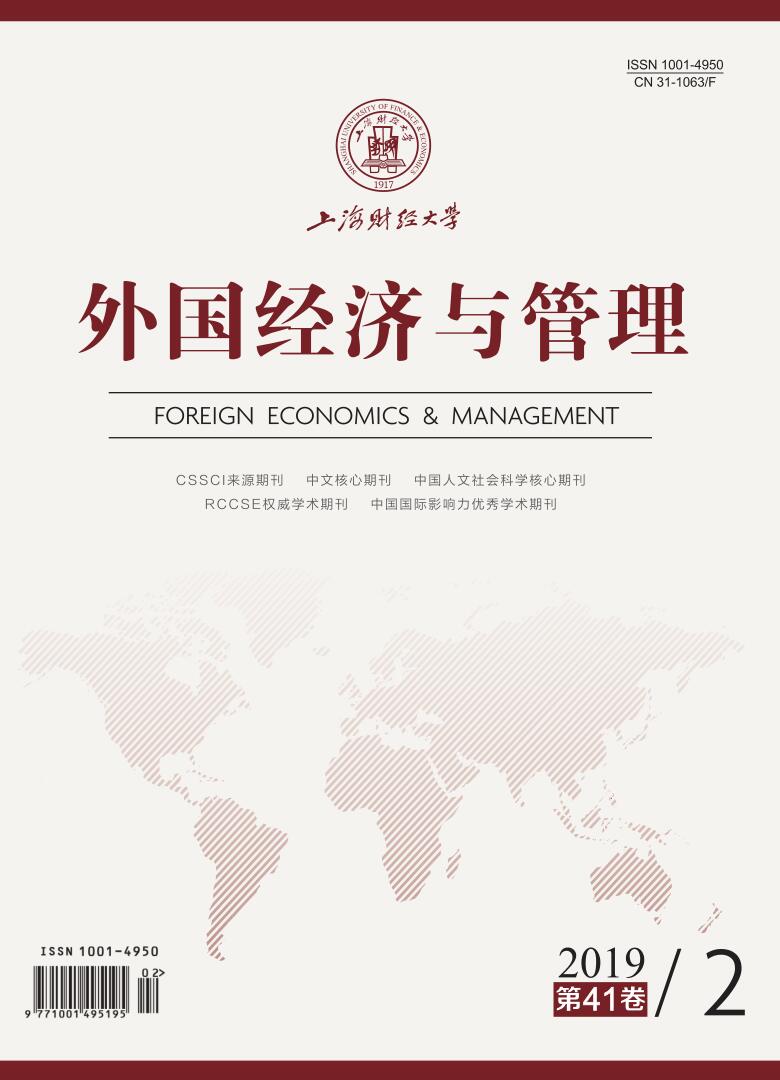Taking the Chinese A-share listed companies from 2012 to 2016 as samples, this paper focuses on the impact of enterprises’ early domestic diversification on their internationalization speed in the later period. The result of this study shows: enterprises’ domestic geographic diversification in the early stage positively affects their internationalization speed in the later period, while enterprises’ domestic product diversification in the early stage negatively affects their internationalization speed in the later period. Further research finds: First, as TMT’s international experience increases, the prompting effect of early domestic geographic diversification on the faster implementation of enterprises’ international expansion will strengthen, while the inhibitory effect of early domestic product diversification on the faster implementation of enterprises’ international expansion will weaken. Second, as TMT’s overconfidence increases, the prompting effect of early domestic geographic diversification on the faster implementation of enterprises’ international expansion will weaken, and the inhibitory effect of early domestic product diversification on the faster implementation of enterprises’ international expansion will also weaken. The research contributions of this paper are as follows: First, this paper uses Chinese multinational corporations as samples to demonstrate once again the negative impact of enterprises’ early domestic product diversification on their internationalization speed in the later period. Second, by further integrating enterprises’ early domestic geographic diversification into the research framework, this study reinforces the explanatory power and predictive power of enterprises’ early domestic diversification on their international decision-making in the later period(such as enterprises’ decision-making of their internationalization speed). This study provides a more systematic and complete new framework for interpreting how enterprises’ early domestic diversification affects their internationalization speed in the later period, and strengthens the explanatory power and predictive power of enterprises’ early domestic diversification on their decision-making of the internationalization speed in the later period. Third, by identifying and examining the impact of TMT’s international experience and TMT’s overconfidence on the relationship between enterprises’ early domestic diversification and their internationalization speed in the later period, this paper further clarifies the boundary conditions of enterprises’ early domestic diversification acting on their internationalization speed in the later period, and strengthens the contextual characteristics of the research framework.
 / Journals / Foreign Economics & Management
/ Journals / Foreign Economics & ManagementForeign Economics & Management
JIN Yuying, Editor-in-Chief
ZhengChunrong, Vice Executive Editor-in-Chief
YinHuifang HeXiaogang LiuJianguo, Vice Editor-in-Chief
Enterprises’ Domestic Diversification and Their Internationalization Speed
Foreign Economics & Management Vol. 41, Issue 02, pp. 139 - 152 (2019) DOI:10.16538/j.cnki.fem.2019.02.011
Summary
References
Summary
[1] Deng Xinming, Xiong Huibing, Li Jianfeng, et al. Political connection, internationalization strategy, and firm value: evidence from the panel data of Chinese private listed companies[J]. Nankai Business Review, 2014, 17(1): 26-43.
[2] Song Tiebo, Zhong Xi, Chen Weihong. Aspiration gap and enterprise internationalization speed: evidence from listed manufacturing companies in China[J]. China Industrial Economics, 2017(6): 175-192.
[3] Wang Yimin, Liang Shu, Zhao Zhibin. A review of frontier research of internationalization speed: Building theoretical model from the perspective of overall process[J]. Foreign Economics & Management, 2017, 39(9): 98-112.
[4] Yu Minggui, Xia Xinping, Zou Zhensong. The relationship between managers` overconfidence and enterprises` radical behavior in incurring debts[J]. Management World, 2006(8): 104-112.
[5] Zeng Ping, Deng Zhiteng, Song Tiebo. Institutional environment, core competence and growth of Chinese private enterprises[J]. Chinese Journal of Management, 2013, 10(5): 663-670.
[6] Zhong Xi, Song Tiebo, Chen Weihong, et al. Promoting or obstruction:research on the influence of board capital on enterprise's internationalization strategy [J]. Science of Science and Management of S.& T., 2018, 39(3): 77-91.
[7] Batsakis G, Mohr A T. Revisiting the relationship between product diversification and internationalization process in the context of emerging market MNEs[J]. Journal of World Business, 2017, 52(4): 564-577.
[8] Dutta D K, Malhotra S, Zhu P C. Internationalization process, impact of slack resources, and role of the CEO: The duality of structure and agency in evolution of cross-border acquisition decisions[J]. Journal of World Business, 2016, 51(2): 212-225.
[9] García-García R, García-Canal E, Guillén M F. Rapid internationalization and long-term performance: The knowledge link[J]. Journal of World Business, 2017, 52(1): 97-110.
[10] Li P Y. Top management team characteristics and firm internationalization: The moderating role of the size of middle managers[J]. International Business Review, 2018, 27(1): 125-138.
[11] Mohr A, Batsakis G. Internationalization speed and firm performance: A study of the market-seeking expansion of retail MNEs[J]. Management International Review, 2017, 57(2): 153-177.
[12] Schu M, Morschett D, Swoboda B. Internationalization speed of online retailers: A resource-based perspective on the influence factors[J]. Management International Review, 2016, 56(5): 733-757.
[13] Sun S L, Peng M W, Tan W Q. Institutional relatedness behind product diversification and international diversification[J]. Asia Pacific Journal of Management, 2017, 34(2): 339-366.
[14] Xie E, Huang Y Y, Peng M W, et al. Resources, aspirations, and emerging multinationals[J]. Journal of Leadership & Organizational Studies, 2016, 23(2): 144-161.
Cite this article
Zhong Xi, Song Tiebo, Chen Weihong, et al. Enterprises’ Domestic Diversification and Their Internationalization Speed[J]. Foreign Economics & Management, 2019, 41(2): 139-152.
Export Citations as:
For
ISSUE COVER
RELATED ARTICLES




 , 1, 2
, 1, 2 6576
6576  8579
8579

